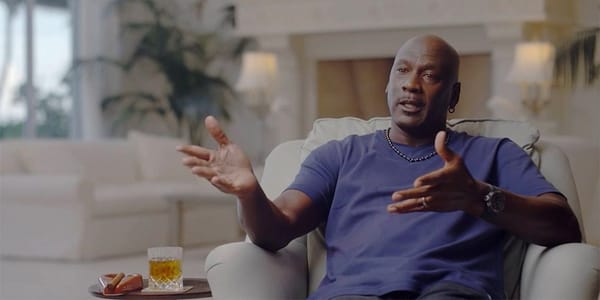Touch Grass: Louise Courvoisier discusses Holy Cow (2024)
An unexpected box office success in France, this debut feature shot in the countryside challenges strict divisions between the popular French comedy and the arthouse drama.
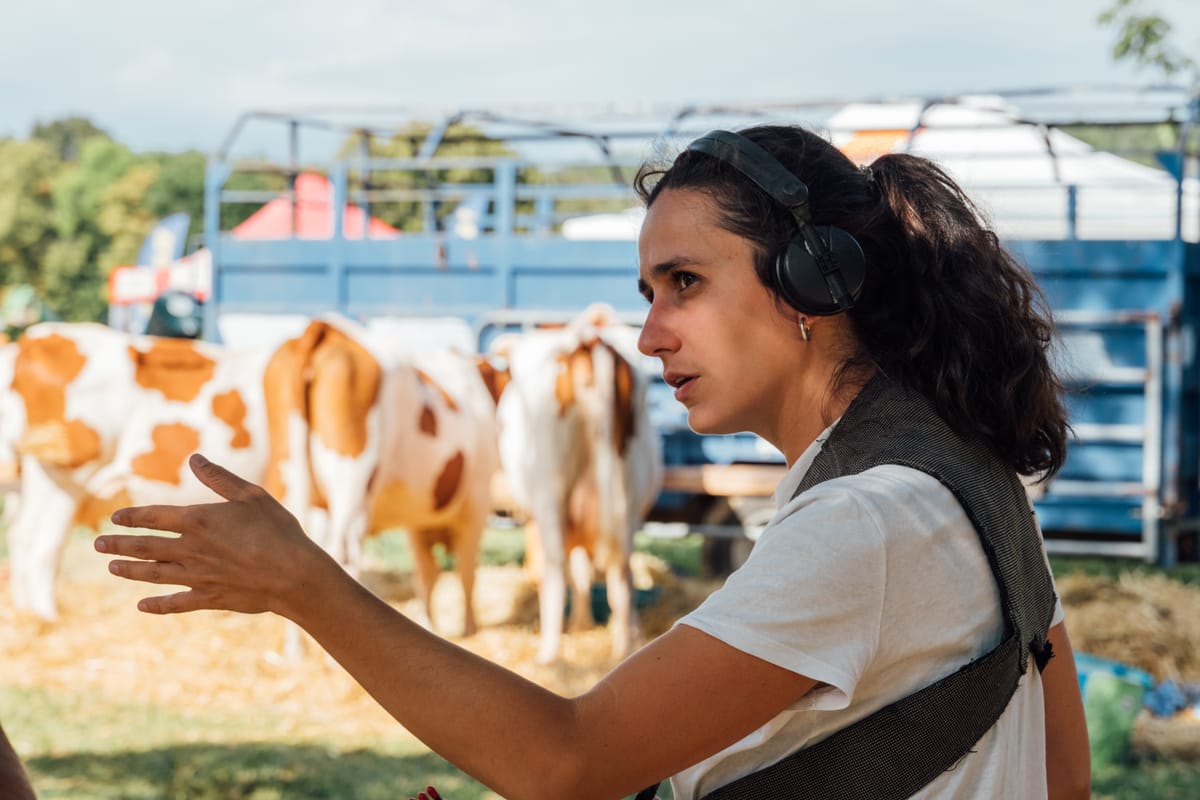
From the perspective of the UK, the French film landscape often seems like a haven of cinephilia, where everyone everywhere is in the habit of watching arthouse films. The reality is more complex: this healthy arthouse circuit would not be viable without a steady stream of successful popular comedies, which critics—and the international press—pay little serious attention to. There is nothing inherently wrong with popular comedies, but their audience rarely overlaps with that of arthouse films, pointing to an uneasy split between an intellectually and artistically minded class, and the rest of the population.
Holy Cow (2024), from young French director Louise Courvoisier, has thrown a wrench into this arrangement—and may point the way towards a less rigidly divided national cinema. Premiering in the Un Certain Regard section of the 2024 Cannes Film Festival, this critically-acclaimed debut feature was awarded the Youth Prize on the Croisette and went on to win two awards at the Césars, including Best First Film. Most significantly, it proved an unexpected box office success, selling nearly a million tickets in the country—more than even the most successful arthouse films can usually hope for.
Shot in the rural Jura region in eastern France, the film centres on Totone (unlikely Steve McQueen lookalike Clément Faveau), an aimless 18-year-old boy whose main interests are drinking, partying, and avoiding work. When his father unexpectedly dies, he must take care of his seven-year-old sister, which requires making money. His plan? To win the €30,000 prize in the local Comté cheese-making contest, bien sûr. The film’s French title, Vingt Dieux, refers to a local idiom which, like the English “Holy cow!”, is used to express surprise—apt for a film full of them. Both comedy and social realist drama, with a chaotic protagonist launching himself into harebrained schemes—all while he reckons with intense feelings of grief, guilt, and insecurity—Holy Cow is refreshing within and without French borders.
What has been your journey into filmmaking so far?
Louise Courvoisier: It very quickly brought me to feature filmmaking. I didn’t go down the usual path of making lots of short films in the usual circles and getting spotted for these shorts. I come from the Jura region, and I went to study film without really knowing what I wanted to do. I never dared imagine being a filmmaker. I think that was partly due to the culture—when you’re a young woman, you don’t have many examples to follow. I wasn’t forbidding myself to do it, I just didn’t think it was possible. So it happened progressively.
I also wanted to see the world. I was coming from this small village where everything is closed off, with little access to culture, and I wanted to see different things and discover the big cities. I first went to Besançon for high school and did a cinema option there. I continued after that because I liked it, but without really knowing why. When I decided to go to Paris to study cinema in college, it was out of curiosity. Later at the Cinéfabrique, I enrolled in the screenwriting course because I was intrigued by it, but I was also considering other departments, like sound… I didn’t have a specific plan. What helped me to eventually decide to direct was the practice: we all had the chance to direct quite a few films at the Cinéfabrique. I was able to direct five short films in three years, which is a lot. The filmmakers’ profiles would emerge through this process quite naturally. We also all worked in the direction of actors, and I really loved that.
Little by little, I started to feel quite comfortable in that position, and I could feel that I had abilities for it, that it came quite naturally to me. So I started to allow myself to imagine making films. And because the shorts we were making were kind of exercises or tests, I wasn’t under too much pressure. I was making them to gain experience. These films ended up meeting with some success quite quickly. The film I made in my second year was in some rather big festivals, and my graduation short, from my third year, won the top prize in the CinéFondation competition at the Cannes Film Festival, which is the section for student films. I’d never been to Cannes, I didn’t know there was a section for student films, we sent our film late… It was all a bit chaotic, and we were part of the first promotion for this new school that wasn’t on anyone’s radar—people were only ever talking about La Femis. Everything kind of happened by chance, and to win the first prize put the school on the map and allowed me to meet with lots of producers as soon as I was out of school. Which is why I was able to start working on this debut feature very quickly.
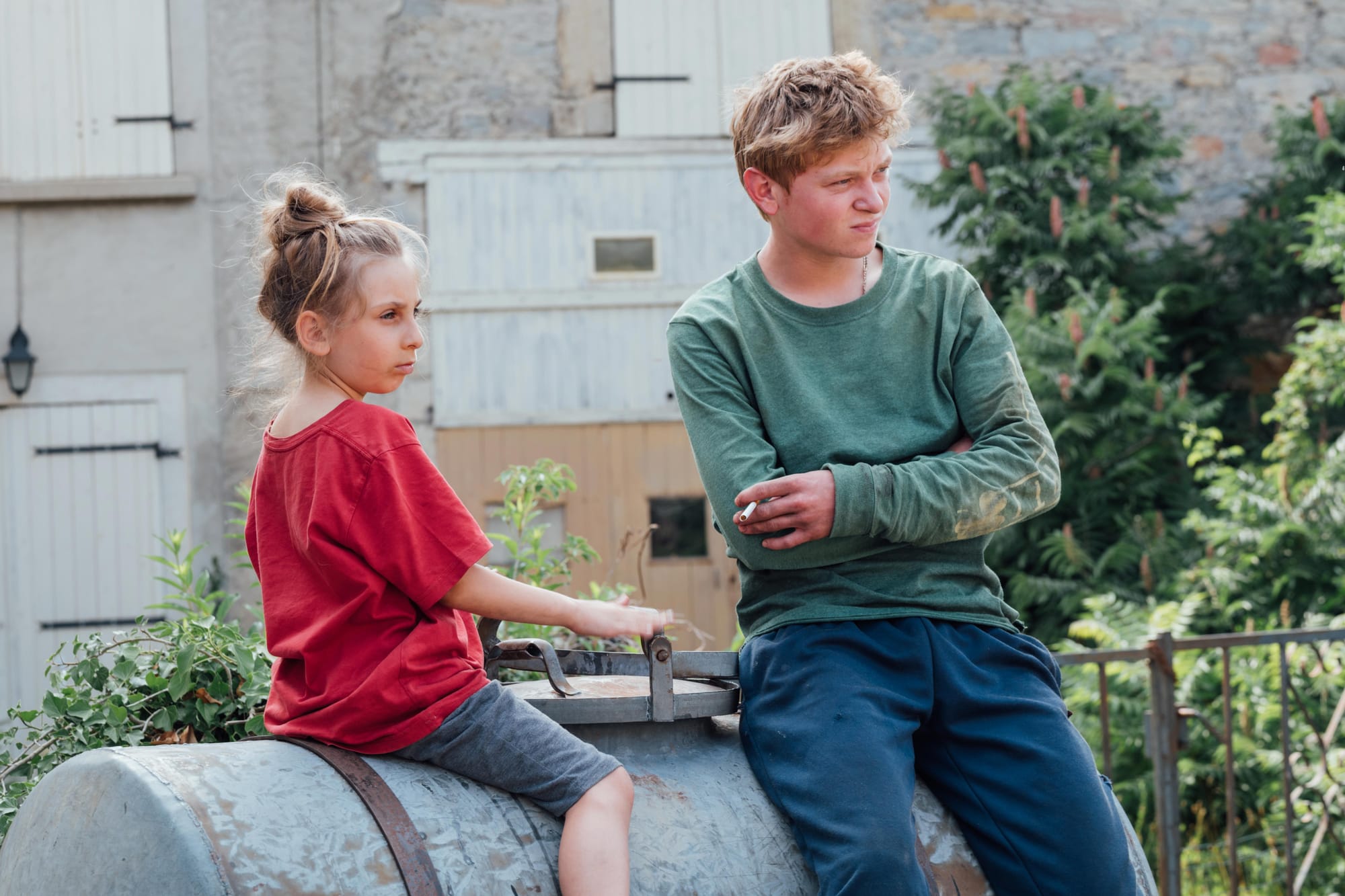
It was a rather unusual, radical project, not easy to sell, a film about cheese in the countryside with non-professional actors—it sounded risky on paper. And I don’t think many producers would have normally followed me. But because I had just won that prize, I was kind of in demand, and I found a producer who was brave enough to do this project. I think many others would have discouraged me from doing this film, and would have preferred that I make a long version of my short film, like most people do. So I took some risks, and I was allowed to take them because I was in the right place, at the right time, with the right people. And it allowed me to start working very quickly on a rather atypical project that shouldn't have worked, but ended up working surprisingly well, which I think was because the stars aligned in many ways.
I think it’s also because the film wasn’t trying to please anyone. It wasn’t trying to fit into a box… There is often this default situation where, because it takes years to make a film, we want to make the film that’s trendy now—and we end up being late, because making films takes years and there are many other people who have the same ideas. So sometimes, taking a completely different path and saying, “I’ll just do my thing”, can surprise people.
You talk about taking risks to make this film, and you certainly did. But you also made it with your family, which is unusual. Was it a way to mitigate those risks and find some comfort, or did it make things harder?
I think most people find that it’s a bigger risk, because no one in my family had ever worked in cinema before. And besides my family, I also worked with people who had just graduated from film school with me. They hadn’t worked on feature films before, and here they were assigned to key roles—the editor, for example. Many producers would be wary of this sort of thing. They’d rather choose people with a lot of experience for these roles to give the project a secure structure. But I felt much safer this way. I didn’t feel like I was taking a risk. I was surrounding myself with people I trusted, who knew me, my tastes, and my way of working. The goal, when you’re directing a film, is to make the crew understand your vision, so I felt like I was saving a lot of time by working with people who already were on my artistic wavelength, who could communicate well with me.
Directors are also in a very vulnerable position, but many don’t want to acknowledge that, and they feel the need to impose their authority in order to be respected. By contrast, I feel like I really need to admit that I have vulnerable and fragile moments. I need to have doubts, and to be in a trusting environment where I feel comfortable enough for that. It allows me to be a reassuring presence for others in turn, and to get the team on board in a peaceful atmosphere. It means that I don’t need to compensate for my fragility by being tyrannical. I wasn’t interested in entering this kind of power struggle. That’s also why I decided to surround myself with people whom I knew I wouldn’t have this dynamic with. To me, these choices meant comfort and trust, where others might have perceived risk.
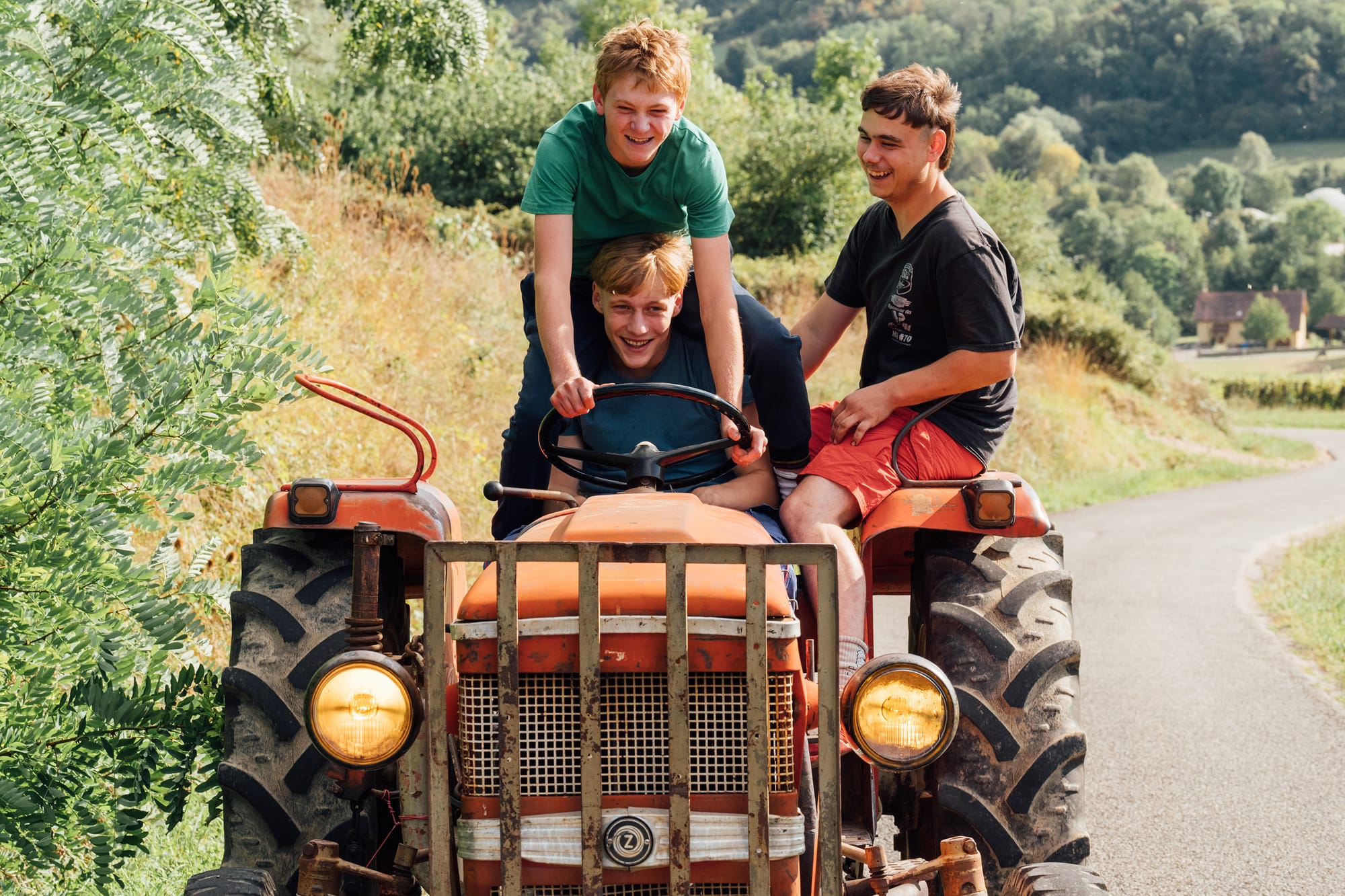
This approach seems relatively modern. A few generations ago, the consensus seemed to be more along the lines of, “let’s just get through this and make the film, we don’t have the time to think about the wellbeing of everyone”. Your more sensitive attitude is interesting in the context of a film that does not seem too interested in the psychology of its protagonist: there is a psychological dimension to why Totone decides to make cheese, but a viewer could ignore it and still enjoy the film. The fact that you don’t paint such a psychologically clear character creates a lot of opportunities for narrative surprise. It makes Totone come across as almost amoral at times, which seems brave from a screenwriting perspective.
I wanted the characters to be really nuanced and unexpected, and to be embodied in the least theoretical way possible. I didn’t want to exaggerate or force anything. I always work as much as I can in a delicate way, taking a few steps back, both in the direction and the writing. I kind of force the viewer to be an active viewer, because I hate explanatory scenes where we get into this forced character psychology to explain one situation or another. I think it’s more interesting to have the characters be incarnated through concrete actions—especially here, with characters who are very pragmatic. They are themselves not interested in a theoretical or analytical approach to the way they feel. They’re a lot more instinctive. I thought that to psychologise them, in that heavy and theoretical way, would be to betray them. They are very much about action, very disconnected from their emotions. And that’s what’s beautiful about them: they’re a little bit overwhelmed.
Because I’m inspired by a people and culture I know well, I always knew exactly where the characters were going. I didn’t have to force things—I wasn’t taking the character from one situation to the other, it was the character who simply couldn’t go in one direction or another… But that really goes against the grain of how things are usually done, and that was a risk. It was something that I was criticised for a lot at the beginning. When you’re looking for financing, it’s often on the basis of a script, and with a debut feature it’s even more complicated because there is no guarantee that the director could shoot a feature-length film well. Because it’s risky, many financiers want scripts that are very clear, very explanatory.
I was also criticised for this lack of morals—which isn’t very French, actually, it’s much more present in other cultures. In French cinema, we’re very afraid of characters who don’t fit in that morality, or who might make some mistakes. The characters I find most compelling and endearing in cinema are those with flaws. I wanted a character who was a long way off righteousness, and who changes—but in his own way, by following his own code. Not that of society or of the classic Hollywood coming-of-age story, which we’ve all internalised a bit. I thought it would be a lot more interesting to have a character who was a bit more caustic. I wasn’t worried that we wouldn’t get attached to him, because I had a lot of affection for my characters, and I know that this is contagious.
This led to me making a film that follows a journey opposite from what we’re used to, not explaining things where we usually expect an explanation. Usually, the tragedy around the father would be a much more emotional thing, and there would be a scene where the son breaks down and cries… But where I come from, I’ve observed a much more frontal relationship to death. Many people in such situations will withdraw into themselves and won’t show their feelings, but will later go to pieces if their girlfriend leaves them. I think it’s more interesting to shift the moment of fragility rather than to place it exactly where we expect it to be, around death and grief. And many people actually react to death in a stoic way, because it is so much to take in. But we rarely see that in cinema because we’re afraid of ending up with a character who seems cold or emotionless. On the contrary, a character who doesn’t react to a dramatic event is very interesting, it tells us a lot about him. It was a real fight, at the writing stage, to keep this roughness, this raw aspect to the characters, which for me is the heart of the film.
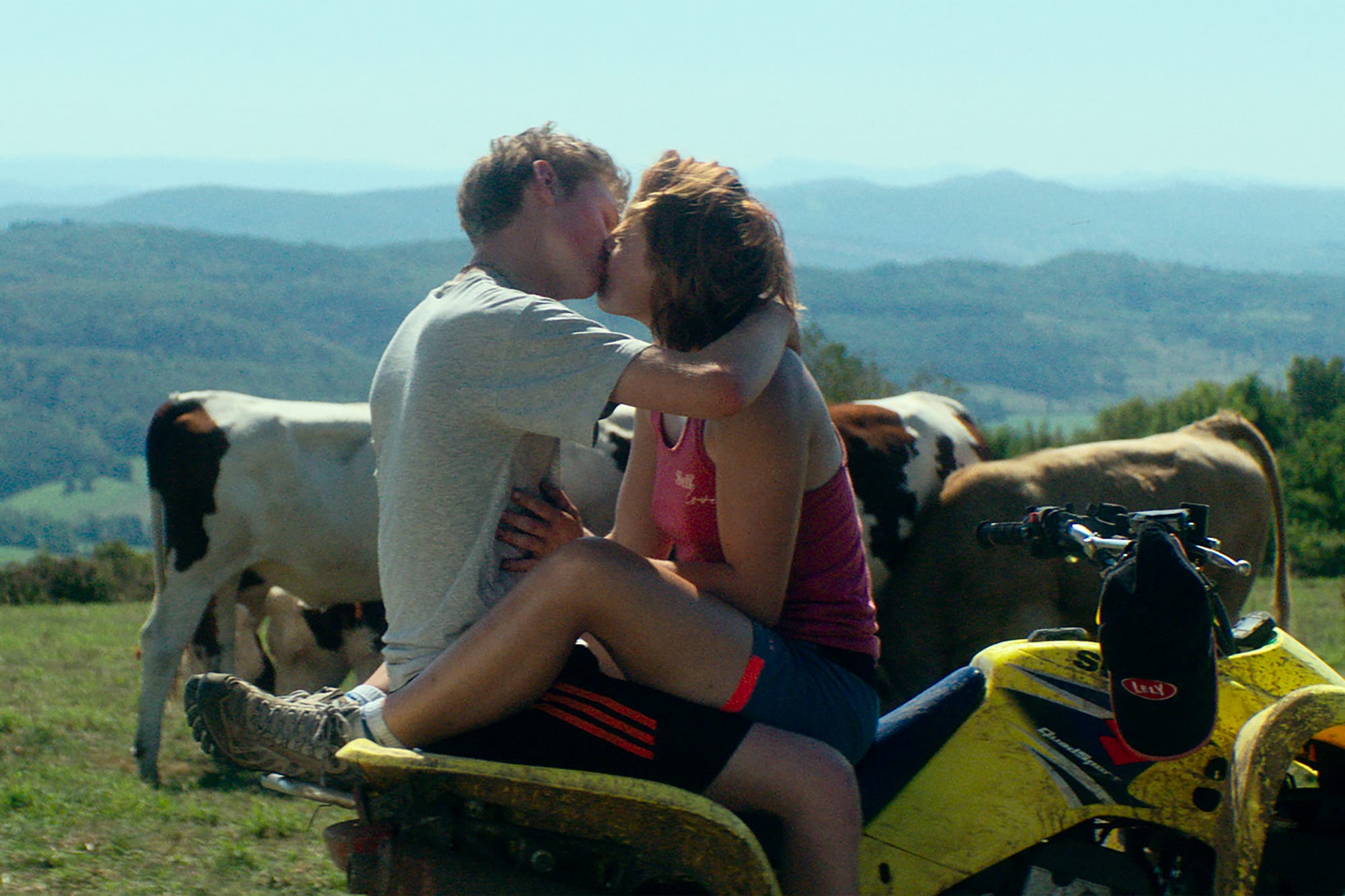
Your actors were all first-time actors. How did you work with them? Did you discuss the psychology of the characters, or focus instead of actions and gestures?
At film school, I quickly understood that it’s actually rather cumbersome for actors—be they professional or not—to get into the psychology of a character. It puts them under a lot of pressure. They try to get into the state of mind of the character in each scene, even though we’re not shooting in order, and there are so many other changing factors. For my part, I prefer to take this responsibility alone—to think to myself, “in this scene, the character has to go through this and this”, and to then direct the actors in a very concrete way. In any case, a psychological direction would not have worked for these actors, because they wouldn’t have known what to do with it. And if the scenes are strong enough in the script, there’s often no need for all this stuff anyway. You don’t need to overload things with intentions in every scene. If the dialogue is strong enough, if the silences are in the right place, if the actors are well situated in the space—I find that there’s usually no need to get into the psychology of the scene.
But during rehearsal, I was always thinking: why doesn’t this sound right? Is it the dialogue, the set design, the position of the characters? It could be any number of things. All of these tools can help make a scene much more believable, and I was using all of the tools I had available to me to try to make it more natural, or more emotionally charged in some parts, depending on what the scene required. But I tried never to put that pressure on the actors, because they hadn’t asked for anything. They arrived on this project a little bit by chance, and I wanted them to be, as much as possible, untouched by all of this. I wanted them to stay as they were as much as possible, to keep their freshness and naturalness—things that would in turn improve the writing as well.
What you said about the way people in the region approach death makes me think of the tone of the film. Something that makes it quite suspenseful is that we’re not sure what register it’s operating in, moment to moment. Will this character really meet a sad and tragic end, or will he succeed? This is also reflected in the sex scenes, where the act is treated with real care, but there is also plenty of humour. Moreover, Totone isn’t exactly a gentleman at all times, and the characters are very young. All of this in a context where many people question the necessity of sex scenes in the first place.
This idea of being in between genres, and the film not being easy to classify—I love it, even if it makes things hard for those who have to market and promote the film, because we don’t really know how to classify it. The film brings to mind many different things, but it’s also unlike any other film. It’s been a real debate: some people call it a comedy, others a drama. But I like to think that it’s somewhere between the two, because life is also a bit of both. I also wanted to make a generous, accessible film, and I think humour allows for this lightheartedness—just because we’re talking about something profound and serious, that doesn’t mean we can’t use humour. Italian directors do that all the time. The English do it a lot, too. In France, it’s more one or the other. But I think it’s interesting to have them coexist. From the start, I didn’t want to accentuate things. I wanted everything to be at the service of the film’s idea, but without that idea being repeated too much in the mise en scène. There needed to be a balance so as to give the film freshness and momentum—to avoid it becoming crushed into something that’s too easy to read, basically. I find it boring when films are too easy to read. I need that complexity, first of all to believe in it, but also because I find it more pleasurable to create as a filmmaker.
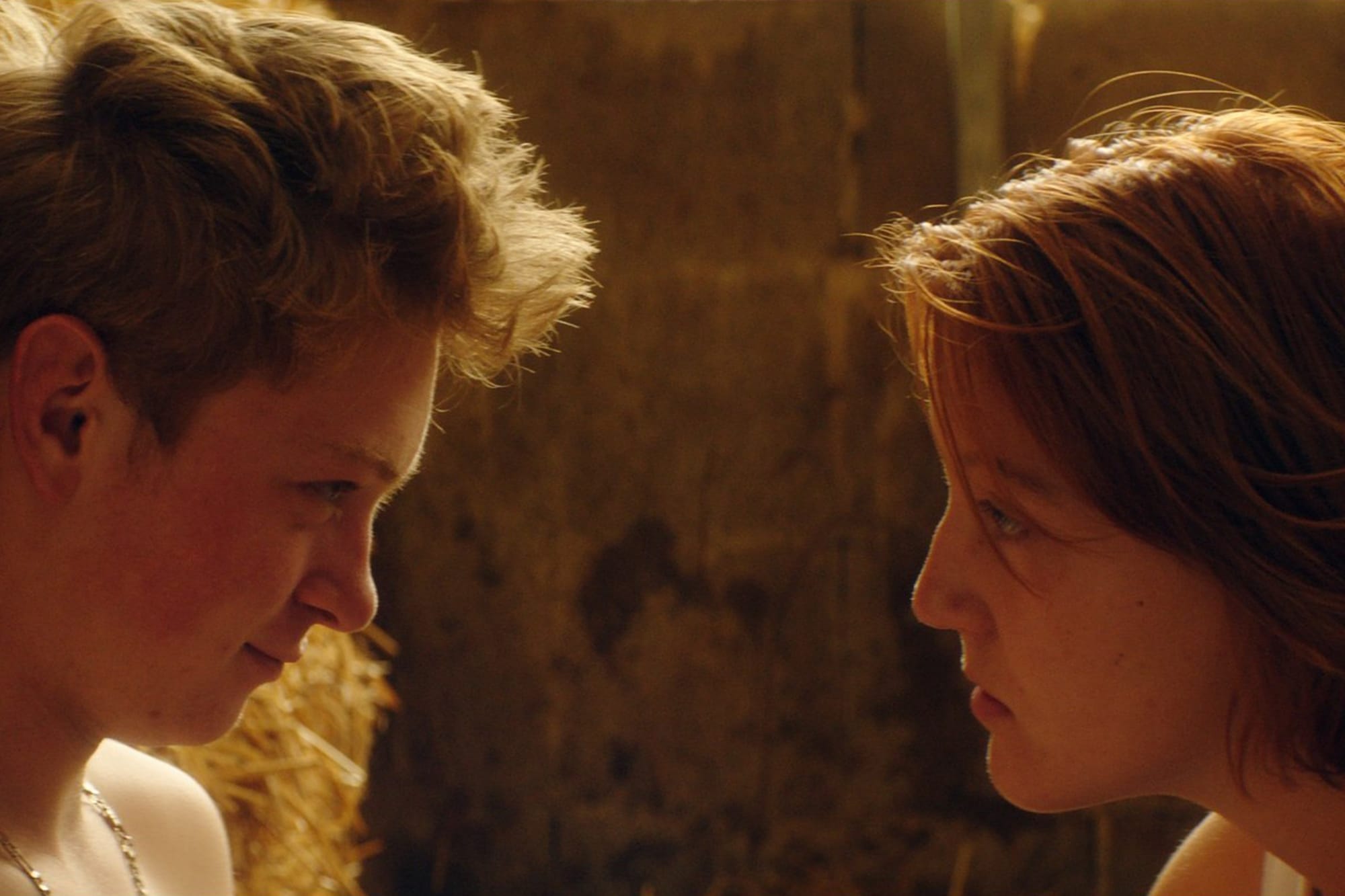
For the more intimate scenes, I knew that it would be interesting to bring together a kind of violence and maturity in some places, combined with a lot of fragility and immaturity in other places—especially with Totone, who has so little self-confidence. I knew that it would be interesting to have these intimate scenes, and to have them not be classical. The problem with sex scenes in general, and I can see that the world is revolting against that at the moment, is that they’re often quite gratuitous. They serve to objectify the bodies of women, to sensualise again and again, and to fantasise. By contrast, what I was interested in was the behind-the-scenes of all this: the parts that aren’t sexy, that are awkward, but which we’re allowed to experience. I believe there is a real responsibility to how we represent sex. Many young men and women may be quite fragile or not have self-confidence in that regard, and to reproduce these ideas that this is how they should do things—even though they feel uncertain and insecure, they might feel forced to do things a certain way, which can lead to moments of violence or microaggression in their intimate lives. I wanted to take a closer look at this lack of self-confidence, with a female character who, by contrast, is very confident and knows what she wants and needs—so as to deconstruct the pressure there might be around sexual performance, even at such a young age. I thought it would be interesting to address it quite frankly, in a scene that still allows for some humour, and to say something perhaps closer to, “let’s stop putting ourselves under this useless pressure.” Because what the two characters actually want is to share an intimate moment together, not to focus on performance, even if they’re afraid that this is what the other is looking for.
Have you seen very different reactions to the film depending on the audience? The film is both arthouse and very accessible, bridging these two categories.
It always makes me happy to hear that, because I knew I was making an auteur film, but I didn’t want the film to be exclusively aimed at that audience. It would have been a failure for me if the film hadn’t been accessible to the people that are in it—the actors, but also the people from the region at large. It’s not part of the culture there to go watch arthouse films, which are usually for a more intellectual, often Parisian audience. By contrast, people in the region tend to watch more popular fare that is kind of custom-made for them. It’s rare for films to work both in Paris, and in the province. As a viewer myself, I love to watch more popular and mainstream films too. I wanted these people to feel welcomed, and I didn’t want the film to appeal only to a few Parisians needing a bit of that rural exoticism. That would have been really difficult for me, even though it was the most likely path for the film.
I accompanied the film on tour, in cinemas throughout the province rather than in the big cities. I think people were receptive to that. The entire Jura region really supported the film, and it sold a lot of tickets there. But even then, when a film like this works really well, we’re usually talking about 200,000 tickets sold. That it almost reached a million I think accounts for the fact that it’s a bit of a hybrid. It’s not a big popular French comedy that sells 10 million tickets, and it’s not a small arthouse film either. It’s at that rare frontier, which I think is for the better, because we need to create bridges between worlds. We’re often too confined to our own audience, to our own world, and we don’t necessarily take an interest in opening up those borders. I think the film surprises people, but it also appeals to their curiosity. For me, that’s the greatest success.
Do you want to continue working in that vein, making films that straddle these two worlds?
What’s certain is that I need to surprise myself. When I feel that there are expectations placed on me one way or another, whether by critics or the industry, it makes me want to run in the other direction. I think it was a good call for me to wait for the release of this film before I started to think about another. Because this experience, and how you handle these reactions, really influences things and gives them a certain direction. It’s all still quite fresh, I’m not exactly sure what direction I’ll go. I have a lot of ideas but they’re still too new to talk about. But I think I can surprise myself with something very different from what I’ve done before. In truth, though, even when we feel like we’re going towards something very different, we always return to something that resembles us. I’m sure there will be a coherence. But I’m going to try to surprise myself and not repeat a recipe.
With thanks to Eric Vernay.




